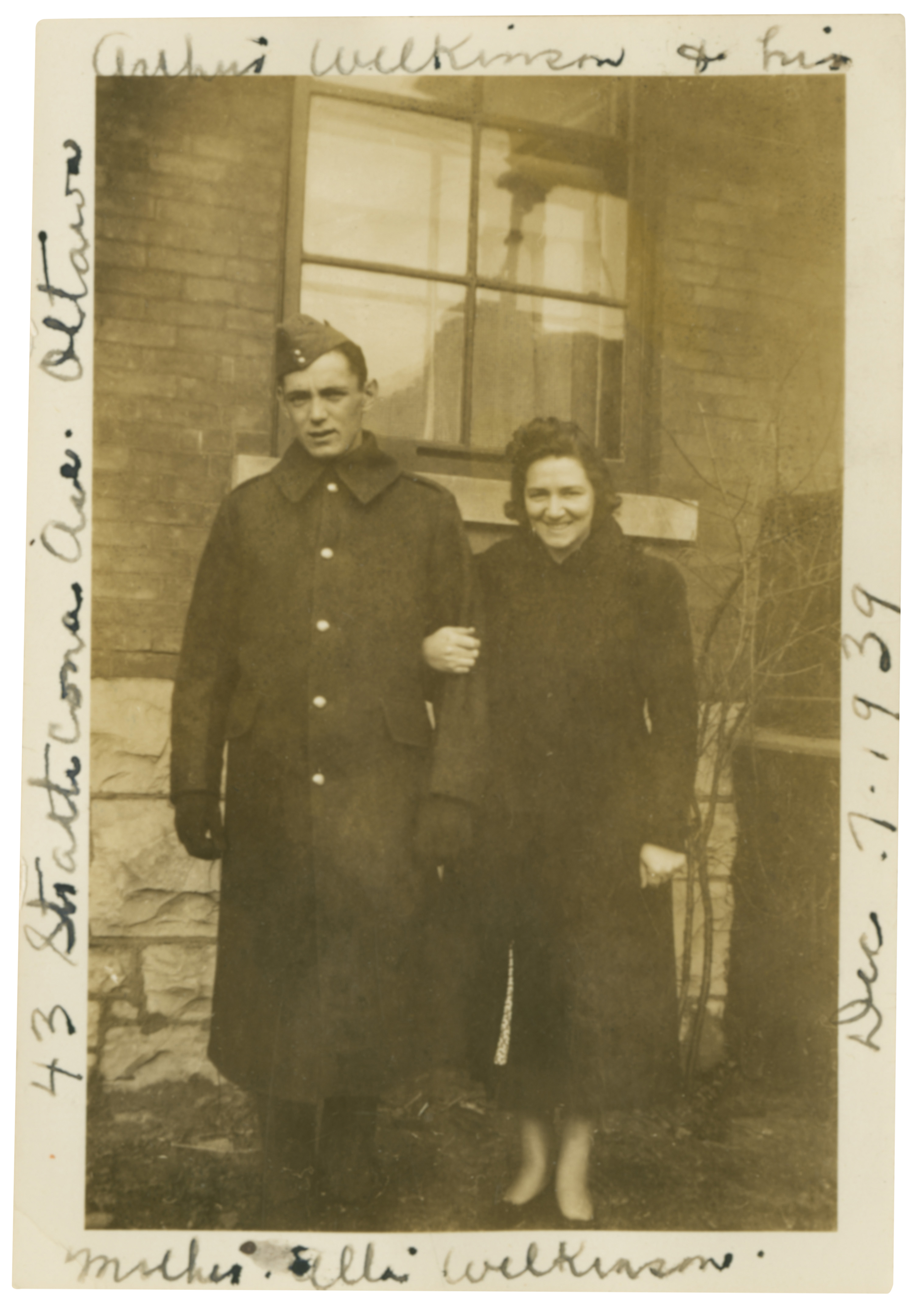The voices of women who served during the first and second world wars can be heard in a new exhibit at the Canadian War Museum in Ottawa.
The exhibit, which runs until April 3, 2016, uses artifacts, posters and recorded interviews with women to tell their personal stories. These are grouped into five themes describing their valiant efforts in theatres of war and on the home front.
The first theme is volunteering. A red apron tells the story of Barbara McNutt of Dartmouth, N.S., who was only 11 years old when she volunteered to sell War Savings Stamps door to door. The apron was the official uniform of a Miss Canada volunteer.
Connie Laidlaw of Hamilton, Ont., used her theatrical talents to create a ventriloquist act with her dummy Charlotte with the Victory Entertainers.
Probably the most dramatic story is found in the serving theme. Joan Bamford Fletcher of Regina was in Indonesia with the British First Aid Nursing Yeomanry in 1941. She led 2,000 Dutch citizens and their defeated Japanese guards out of their prison camp and into the jungle until they reached the safety of the city of Padang.
Pipe Major Lillian Grant also served in an unusual manner, as the leader, recruiter and trainer of the Canadian Women Army Corps Pipe Band. She took the band across Canada, the United States and Europe. “Any girl can learn to play if she is musically inclined and has the lung power,” she said. A photo shows the band playing along the Champs Élysées in Paris.
Under the theme of working are the stories of all the women who took factory jobs, so men would be able to fight. Thousands of women worked in industry and agriculture, including those who made such war supplies as bullets, artillery shells and Sten submachine guns. Mary Mays was among thousands of workers for the Imperial Munitions Board. “My job was to use gauges to test pieces of work for 18-pounders. I tended 14 lathes operated by 14 women,” she said.
Those left at home were subject to all sorts of propaganda. The theme of domestic pressure offers a variety of posters, radio broadcasts and newspaper articles encouraging women to take jobs so men can fight, buy victory bonds, salvage metal items or cook vegetable-based meals so meat can go to those doing the fighting.
The final theme is that of worry and loss. Surrounding the whole exhibit are windows with personal belongings and keepsakes telling the very personal stories of women who lost husbands or sons or spent countless hours worrying about those overseas. Women as famous as suffragette Nellie McClung has personal letters to her son, Jack, in the display. “What have I done to you, in letting you go into this inferno of war? And how could I hold you back without breaking your heart?” she asks.

Arthur Wilkinson stands by his mother, Alta Wilkinson, just before he left for war in 1939 (above). He was killed in Normandy in 1944. [George Metcalf Archival Collection]
In another display we hear of Mary Hall, who accepted the Victoria Cross, posthumously awarded to her son Frederick William Hall during the First World War. Hall was killed while making a second attempt to rescue a wounded comrade under heavy enemy fire during the Second Battle of Ypres. He was one of three Winnipeg men who all lived on the same street and earned the Victoria Cross in the war. The city of Winnipeg has since renamed the street Valour Road.
“During the two world wars, thousands of women served in the military. Others redoubled their efforts at home, knitting socks and sending care packages to soldiers overseas,” said Stephen Quick, director general of the Canadian War Museum. “Women broke through gender barriers to become munitions workers, truck drivers, mechanics and more. This exhibition tells these stories through their voices and looks at the many ways in which women threw their energies into the war effort, often while grieving husbands, sons and brothers killed in battle.”
Advertisement























